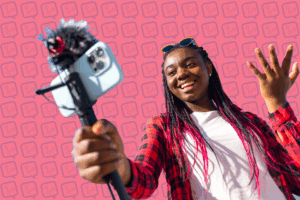Optimizing Social Media Posts for Enhanced Search Visibility

In today’s digital age, social media has become indispensable for brand promotion and engagement. However, many businesses need to pay more attention to a critical aspect of their social media strategy: search engine optimization (SEO). Optimizing social media posts to appear in search results boosts visibility and extends a brand’s reach beyond its follower base.
Understanding the Role of SEO in Social Media
Search Engine Optimization (SEO) refers to the techniques and strategies employed to improve a website’s visibility on search engine results pages (SERPs). While social media platforms are not traditional search engines, their content often appears in search results. This presents an excellent opportunity for brands to capture a wider audience. When users search for keywords related to a brand, its well-optimized social media content can appear, increasing brand awareness and potential engagement.
Critical Strategies for Optimizing Social Media Posts
Keyword Research: Just like with traditional SEO, keyword research is crucial. Identify relevant keywords and phrases that your target audience is likely to use. Tools like Google Keyword Planner, SEMrush, and Ubersuggest can assist in finding high-impact keywords.
Keyword Integration: Once you have your keywords, integrate them naturally into your social media posts. Place them in your post’s captions, titles, descriptions, and hashtags. However, avoid keyword stuffing, as it can harm the readability and authenticity of your content.
Quality Content: High-quality content will likely be engaged with and shared, improving search visibility. Create valuable, informative, and entertaining content that resonates with your audience.
Hashtags: Hashtags are vital for searchability on platforms like Instagram and Twitter. Research trending and industry-specific hashtags and use them strategically in your posts to increase discoverability.
Geotagging: If relevant, geotagging can enhance local search visibility. When users search for location-specific content, your posts could appear if adequately geotagged.
Optimize Profiles: Complete and optimize your social media profiles. Use relevant keywords in your profile descriptions, and ensure that your brand’s information is accurate and up-to-date.
Link Building: Include links to your website or landing pages in your posts when relevant. This drives traffic and strengthens the SEO value of your social media content.
Engagement and Sharing: Search algorithms consider posts that garner likes, comments, and shares more valuable. Encourage engagement through compelling calls to action and by fostering a sense of community.
Visual Appeal: Use high-quality images and videos in your posts. Visual content tends to generate higher engagement, and platforms like Pinterest and YouTube often appear in search results.
Regular Posting: Consistency matters. Regularly updating your social media profiles with fresh, relevant content signals to search engines that your brand is active and engaged.
Utilize Rich Snippets: Some platforms support rich snippets that can enhance the visibility of your content in search results. For example, on Pinterest, rich pins provide additional information and context.
Cross-Promotion: Promote your social media profiles on your website and other platforms. This boosts your social media following and encourages search engines to recognize and index your profiles.
In conclusion, optimizing social media posts for search engines is an effective way to expand your brand’s online reach and increase visibility. By incorporating SEO strategies into your social media efforts, you can tap into a broader audience base, enhance engagement, and drive more traffic to your brand’s content. Remember that SEO is an ongoing process, so continually monitor and adjust your approach based on performance metrics and changing trends.






